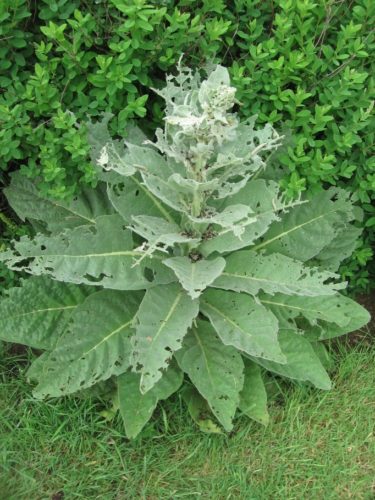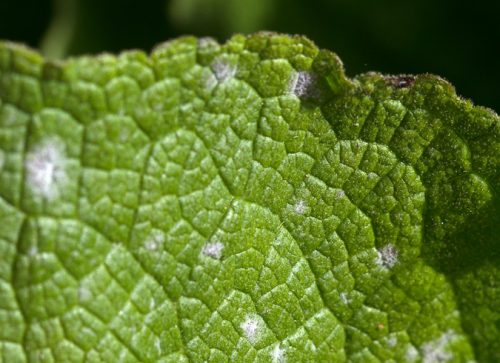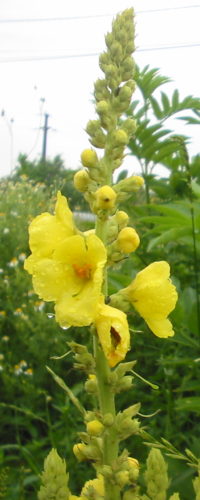Mullein – there are over 250 different species, all part of the figwort family. The plant is native to Europe and Asia. Around the Mediterranean, you will find them in abundance.
You are viewing the mobile-adapted version of the page.
The one for tablets, laptop and desktop also provides general information, such as origin, toxicity and cultivation.
Mullein (Verbascum). There are over 250 different species, all of them part of the figwort family (Scrophulariaceae). The plant is native to Europe and Asia. Around the Mediterranean, you will find them in abundance. Mulleins are host plants for, among others: the translucent pearl (Paratalanta hyalinalis), the striped lychnis (Shargacucullia lychnitis) and the water betony (Shargacucullia scrophulariae).
Mullein is not poisonous; it is used as a cough medicine. The seeds of some species are used in fishing because the seeds are believed to be poisonous for fish; In the United States, the use of mullein seeds for fishing is prohibited.
Bugs

Crested torch: Mullein moth (Cucullia verbasci).
Holes in leaves, slime trails: snails and slugs.
Fungi & diseases

White spots on the leaves: powdery mildew (Ascomycete strain).

